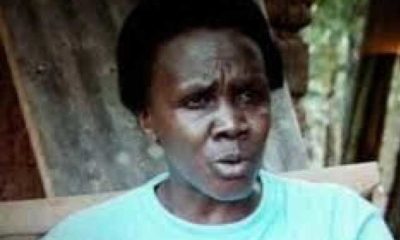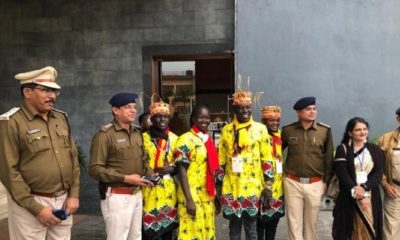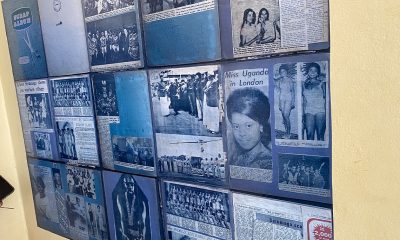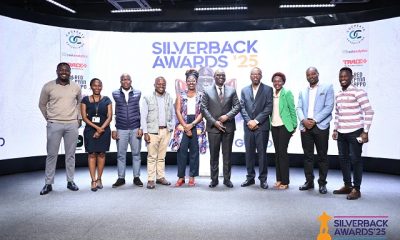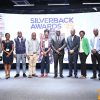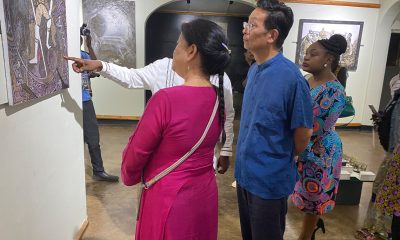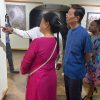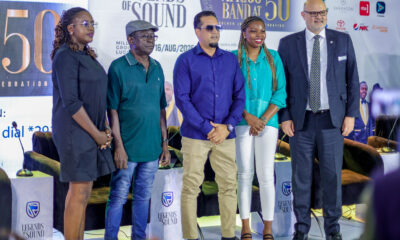Arts
When Science went to the Theatre
Power of emotion helps scientists amplify their voices
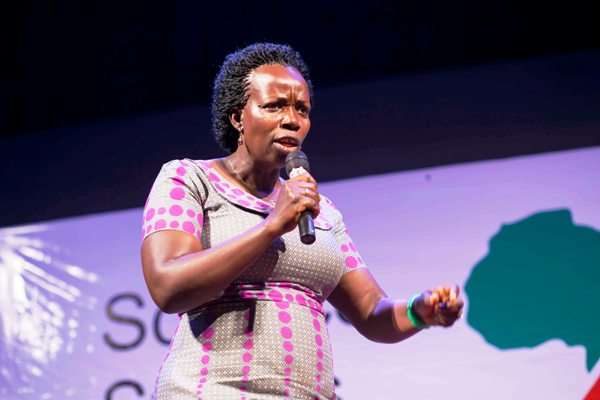
Dr. Priver Namanya from NARI speaking at the National Theatre
It was American poet and political activist Muriel Rukeyser who said the universe is made up of stories not atoms. This is perhaps the logic behind a new initiative called Science Stories Africa. Under the initiative, scientists are given the opportunity to use the power of the spoken word to bring to life usually new and difficult concepts to the appreciation of ordinary people.
Five scientists from diverse backgrounds including agriculture, engineering and ICT marked the inaugural edition of Science Stories Africa in Uganda at a well attended show that was held at the National Theatre last Saturday.
Speaking under the theme: “I almost gave up”, the scientists told personal stories of how they overcame adversity and failure to achieve success and how thier success can impact the wider Ugandan society.
28 year old Allan Muhumuza, a mechanical engineer from the Jinja-based Kiira Motors Cooperation, deservingly earned the first stand with a powerful and emotional show about the potential benefits of a Ugandan-built electric vehicle over the ubiquitous gasoline vehicles. Muhumuza captured the audience’s attention with a passionate narrative of the dark realities of air pollution in Kampala which he and his wife encountered when they left the hospital with their new born baby Atara recently.
“The moment I was handed baby Atara shortly after she was delivered, I held her in my arms and made a personal commitment that I would protect her and support her in every way that I could. But the realities of the world in which we were going to raise our daughter, soon hit home the moment we reached the road. An old vehicle spewed a dark smoke that spread into our car. It was so thick that it blocked our vision and yet it was late for me to raise the windows,” recounted Muhumuza.
Uganda’s Electric Car Revolution
With a powerful illustration of an innocent child under danger, Muhumuza’s grabbed the attention of the audience for an opportune moment to break the news about an electric vehicle that would solve the pollution challenge.
In fact, he argued, adopting the electric vehicle would not only save millions of Ugandans and potentially hundreds more in the region from hazardous motor vehicle pollution, it save the country close to a trillion dollars that we spend annually to import oil.
And if other dynamics of public transportation were to be considered, a Kayoola bus – the mass transport electric bus, was to be factored in, the multiplier effect on both the environment, health and the economy would be greatly enhanced.
From the electric vehicle solution to fume-related cancer, it was gratifying to learn that other scientists have been busy trying to find a solution to other types of cancer, arguably the greatest health challenge in Uganda.
Fish Smoking Kiln
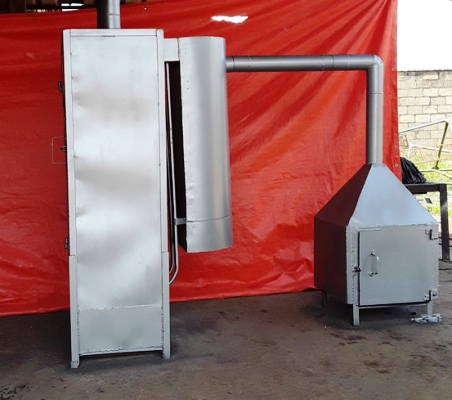
Fish smoking Kiln
Eng. Alphonse Candia from the Namalere-based National Agricultural Research Organisation (NARO) value addition research centre, explained how he succeeded in fabricating a fish-smoking kiln that traps cancer-causing fumes while at the same time preserving the aroma of smoked fish.
Smoked fish is a delicacy not just in Uganda but across the Great Lakes region. Sadly, very few Ugandans and other nationalities know that the black coating that is characteristic of smoked fish, is in fact a source of the dreaded cancer.
Scientific evidence points to the fact that cancer-causing hydrocarbons are trapped by fish and other foods like meat while smoking. In communities such as West Nile where Eng. Candia originates, the thought that their favourite dish is a potential source of cancer, weighed heavily on him and forced him to work on finding a solution.
Candia’s illustration about his breakthrough was even more dramatic. He narrated that after years of trying and failing to build a kiln that eliminated the cancer-causing hydrocarbons from smoke, tests by nutritionists were always returning unfavourable results. But in 2016 as he was sleeping, the solution occurred from a dream.
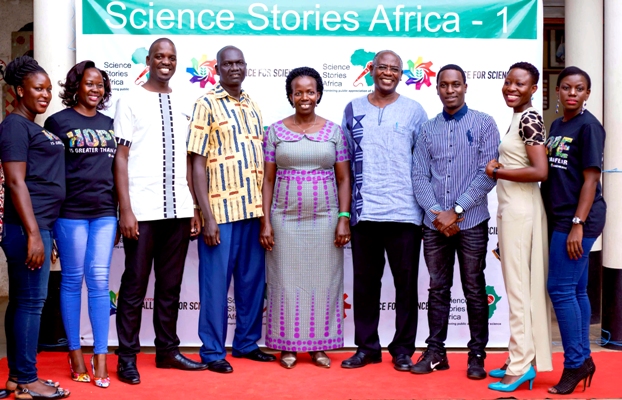
L-R Eng. Allan Muhumuza, Eng. Alphonse Candia, Dr Priva Namanya, Prof. Wilberforce Tushemereirwe and Patricia Nanteza at the inaugural Science Stories Africa
“It all happened during a dream. After going through the dream, I woke up immediately so that I could record what I had just envisioned. I jumped out of bed to record the facts because they were very critical for the success of our project. When my wife saw me get up, she followed me. She thought something wrong had happened to me. But after I wrote down the formula, I explained and apologised, then we went back to bed,” recollected Eng. Candia.
When night turned into day, Candia stormed the workshop to implement what he had recorded. It didn’t take long before he had a prototype kiln that was tested and found to be effective in preserving fish without the dark-smoke that is a cure cause of cancer.
Since then, Candia’s efforts have elevated his name in the scientific community and wider Ugandan society as one of the very few inventors the country has ever produced. It is thanks to his efforts that NARO, the organisation that employs him, has registered a patent with The African Regional Intellectual Property Organization (ARIPO) through the Uganda Registration Services Bureau (URSB).
It is not clear yet how NARO will bring this exciting innovation to the market for the benefit of the wider public. This is especially so after the government last year thwarted the organisation’s efforts to establish a subsidiary entity that would translate hundreds of research concepts into commercial products that can be easily obtained by the public.
Candia’s dilemma about policy-related difficulties in commercialising products of agricultural research were the subject of two more speakers at the inaugural Science Stories Africa night.
Dr. Priver Namanya Bwesigye, a lady from Bushenyi and one of the very few women agriculture PhD holders, made a gripping recollection of how she managed to put together conditions necessary to regrow whole new plants right from cells – a system known in breeders’ speak as cell suspension.
In 2004, she was tasked with developing a cell suspension system for highland bananas. No one in the world, according to Namanya, had achieved this feat for bananas – popularly known as Matooke. This made her task the more important but also challenging. Achieving the goal was critical to addressing urgent diseases, that had defied convention means. Although Genetic Engineering offered a solution, they couldn’t use it without having the know-how of regenerating whole new plants from engineered cells.
For more than a year, Namanya spent sleepless nights but still failed to have the cells grow into plants. She grew so frustrated that she decided to abandon the assignment. She applied for a job in Entebbe but instead encountered people who knew she had unfinished business at Kawanda. They declined to employ her and sent her back to Kawanda.
She recalled the response from the person who was interviewing her. “He told me, Priver, you are a bright lady, but I am not giving you this job. Go back to Kawanda; that’s where your career is.”
She went to the verge of depression only to be saved by prayer that helped her to remain hopeful and focused. And while recalling her mothers’ words of encouragement in the face of adversity, Namanya chose to push ahead.
She said: “When I was a child, my mother sent me to the cupboard to get sugar but I failed to open it. When I reported that to her, she said, ‘What has the cupboard told you?’” Before she could answer, the mom added: “What does not speak cannot defeat you.”
These memories encouraged her to soldier on. Four months after returning to Kawanda, something akin to a miracle happened. While checking on her work in the lab one day, she realised that shoots had started to form.
The timing of Dr. Namanya’s discovery, was critical for the whole country following the outbreak of the devastating banana bacterial wilt that ravaged plantations throughout the 2000s.
Conventional research had proved ineffective in finding a solution to the disease that had almost wiped out the crop considered as the most important food crop by more than half of Uganda’s population.
Being able to re-generate plants from cells empowered Namanya and other scientists to try to enhance the plants’ defence mechanism through genetic engineering.
It is no surprise therefore that ever since her pioneering work, Uganda has progressed rapidly to address disease and nutrition-related challenges associated with the East African Highland bananas using genetic engineering.
Using her breakthrough, NARL have succeeded in addressing the Black Sigatoka disease and Banana Bacterial wilt diseases using GM technology. Most recently, Kawanda scientists produced a Vitamin A rich Matooke that is considered essential in combating child stunting arising from inadequate consumption of the vital element.
Namanya’s finding cannot be enjoyed by the rest of Ugandans because of the prevailing air of suspicion among government bureaucrats that GM-derived plants are dangerous, despite evidence from major scientific bodies across the world saying that the opposite is true.
Because of Namanya’s success, other studies including one by Prof. Wilberforce Tushemereirwe, the Director of NARL on increasing Vitamin A- content in Matooke, have since been realised. The scientists say that although much of the GM research at Kawanda is largely successful, new varieties cannot reach ordinary farmers due to a lack of a favourable law that allows for the adoption of these crops for cultivation by farmers.
The rapid increase in the spread of cancers as well as the rising demand for adequate nutritious food in Uganda indeed calls for everyone’s attention to the efforts of our scientists.
And as Patricia Nanteza, the brain behind the Science Stories Africa initiative noted, asking scientists to appear on stage at Theatre wasn’t meant to dramatise the issues but rather to reach out to more people who would otherwise be skeptical about topics like GMOs. “Also most people rarely interface with the people who carry out this research. It was a way of putting a face to the innovation,” said Nanteza.
Comments





